Perfecting your aim in darts is the key to consistent scoring and ultimately, winning. This article will break down the core elements of aiming in darts, offering practical techniques and advice to elevate your game, including stance, grip, and follow-through, and will cover how to correct common aiming mistakes.
⚠️ Still Using Pen & Paper (or a Chalkboard)?! ⚠️
Step into the future! The Dart Counter App handles all the scoring, suggests checkouts, and tracks your stats automatically. It's easier than you think!
Try the Smart Dart Counter App FREE!Ready for an upgrade? Click above!
Understanding the Fundamentals of Aim in Darts
Before diving into specific techniques, it’s crucial to grasp the fundamental principles that govern your aim in darts. These principles include stance, grip, alignment, and release. A solid understanding of these elements will provide a strong foundation for improving your accuracy and consistency.
Stance: The Foundation of Your Throw
Your stance is the bedrock of your darts game, impacting balance and stability. The most common stances are the side-on, the front-on, and the angled stance. Experiment to find what feels most natural and comfortable for you. Regardless of your choice, maintain a consistent foot placement for each throw. Weight distribution is also crucial; most players find a slight lean forward helps with balance. Remember to keep your core engaged to maintain stability throughout the throwing motion. Consistency here will drastically improve your scoring.
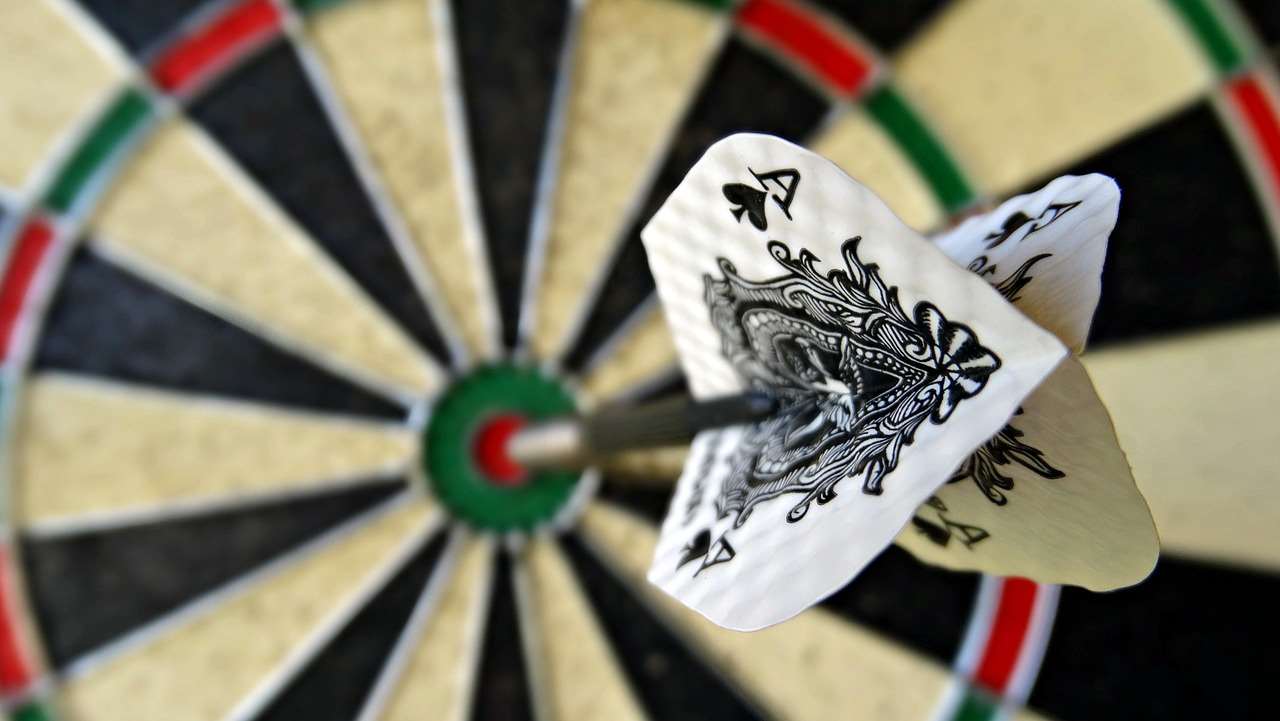
Grip: Finding Your Perfect Hold
The grip is how you connect with the dart, influencing control and release. There’s no one-size-fits-all grip; it’s about finding what works best for your hand size and throwing style. Experiment with different grips, from a light hold using just your fingertips to a firmer grip using more of your hand. The key is to maintain a consistent grip pressure for each throw. Avoid gripping the dart too tightly, as this can lead to tension and inaccuracy. Consider trying different dart flights to change the balance of the dart in your hand.
Alignment: Sighting Your Target
Proper alignment ensures that your eye, dart, and target are in a straight line. This is a critical component of aim in darts. Focus on aligning your dominant eye with the target, using the dart as a visual aid. Some players find it helpful to close one eye to improve focus and alignment. Practice aligning your body and arm with the target before initiating your throw. Consistent alignment will significantly improve your accuracy.
Refining Your Aim in Darts: Techniques and Drills
Once you have a solid understanding of the fundamentals, you can begin refining your aim in darts through specific techniques and drills. These exercises will help you develop muscle memory and improve your consistency.
The Visual Aiming Technique
The visual aiming technique involves focusing intensely on the target before and during your throw. Choose a specific spot on the board, such as the wire above the treble 20 or the center of the bullseye. Visualize your dart hitting that spot. Maintain your focus throughout the throwing motion, from your stance to your follow-through. This technique helps to improve your concentration and accuracy.
The Follow-Through: Completing the Motion
A proper follow-through is essential for consistent aim in darts. Extend your arm fully towards the target after releasing the dart. Maintain a smooth and fluid motion, avoiding any jerky movements. Your follow-through should be a natural continuation of your throwing motion. Practice your follow-through regularly to develop muscle memory and improve your accuracy. Many new players struggle to release the dart at the right moment; practicing the follow through will help you refine this process.
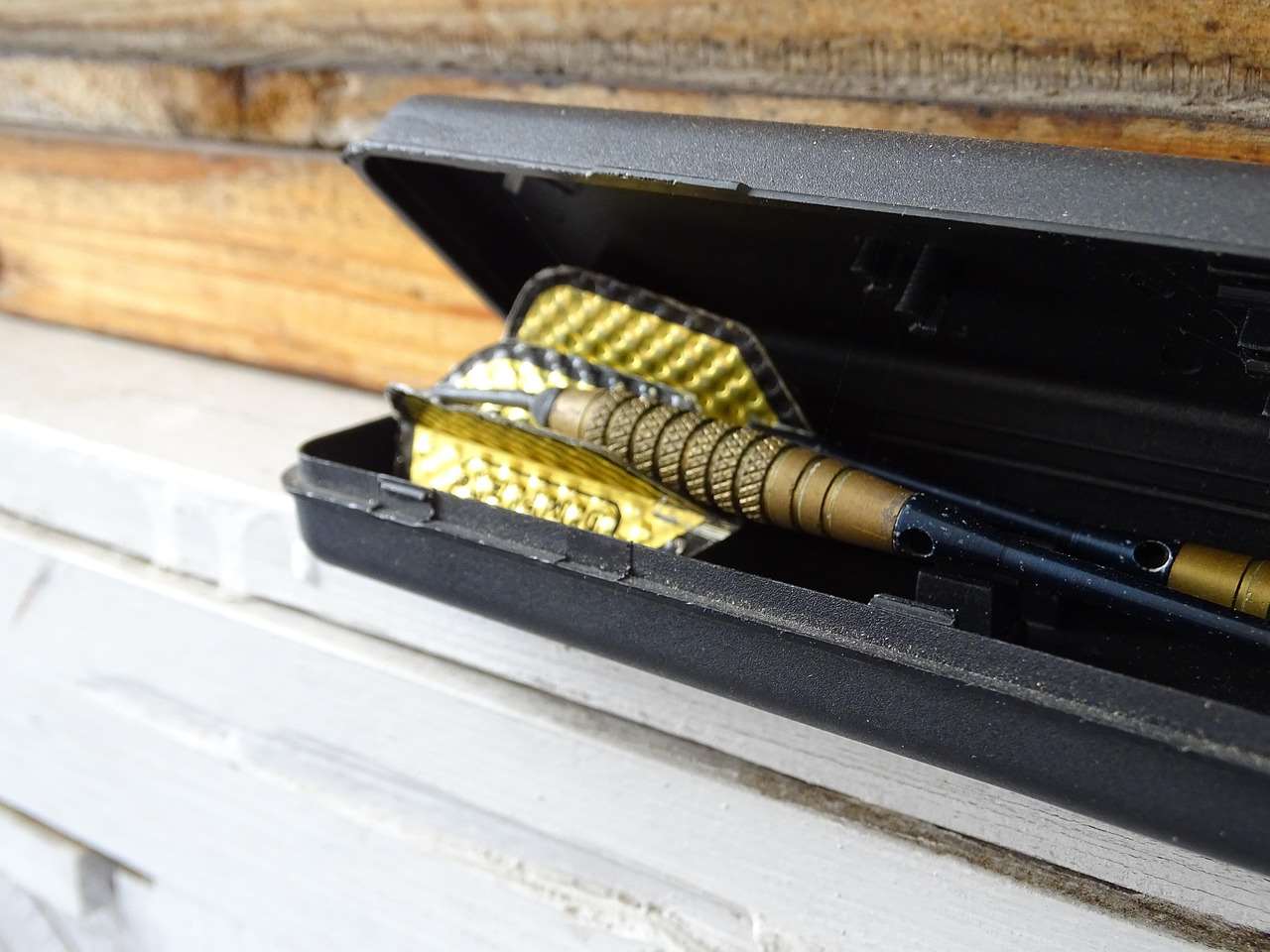
Practice Drills for Improved Accuracy
Regular practice is crucial for improving your aim in darts. Incorporate specific drills into your practice routine to target different areas of the board and improve your consistency. Here are a few effective drills:
- Around the Clock: Start at the 1 and work your way around the board, hitting each number in sequence.
- Doubles Practice: Focus on hitting specific doubles, such as the double 20 or the double 16.
- Trebles Practice: Aim for the treble 20 repeatedly to improve your scoring.
- Bullseye Challenge: Set a target number of bullseyes to hit in a row.
Common Mistakes That Affect Aim in Darts
Even experienced players can fall victim to common mistakes that affect their aim in darts. Identifying and correcting these mistakes is crucial for improving your consistency.
Inconsistent Stance and Grip
Maintaining a consistent stance and grip is essential for accurate throwing. Avoid changing your stance or grip from throw to throw, as this can lead to inconsistency. Develop a routine that you follow for each throw, ensuring that your stance and grip are always the same. Small adjustments can be made, but major overhauls during a match are generally not recommended.
Rushing the Throw
Rushing your throw can lead to inaccurate shots. Take your time to focus on your target and align your body before initiating your throwing motion. Avoid throwing the dart too quickly, as this can disrupt your rhythm and accuracy. Practice throwing at a consistent pace to improve your timing and control. Consider trying new dart flights to alter the aerodynamics of your throw if you are rushing.
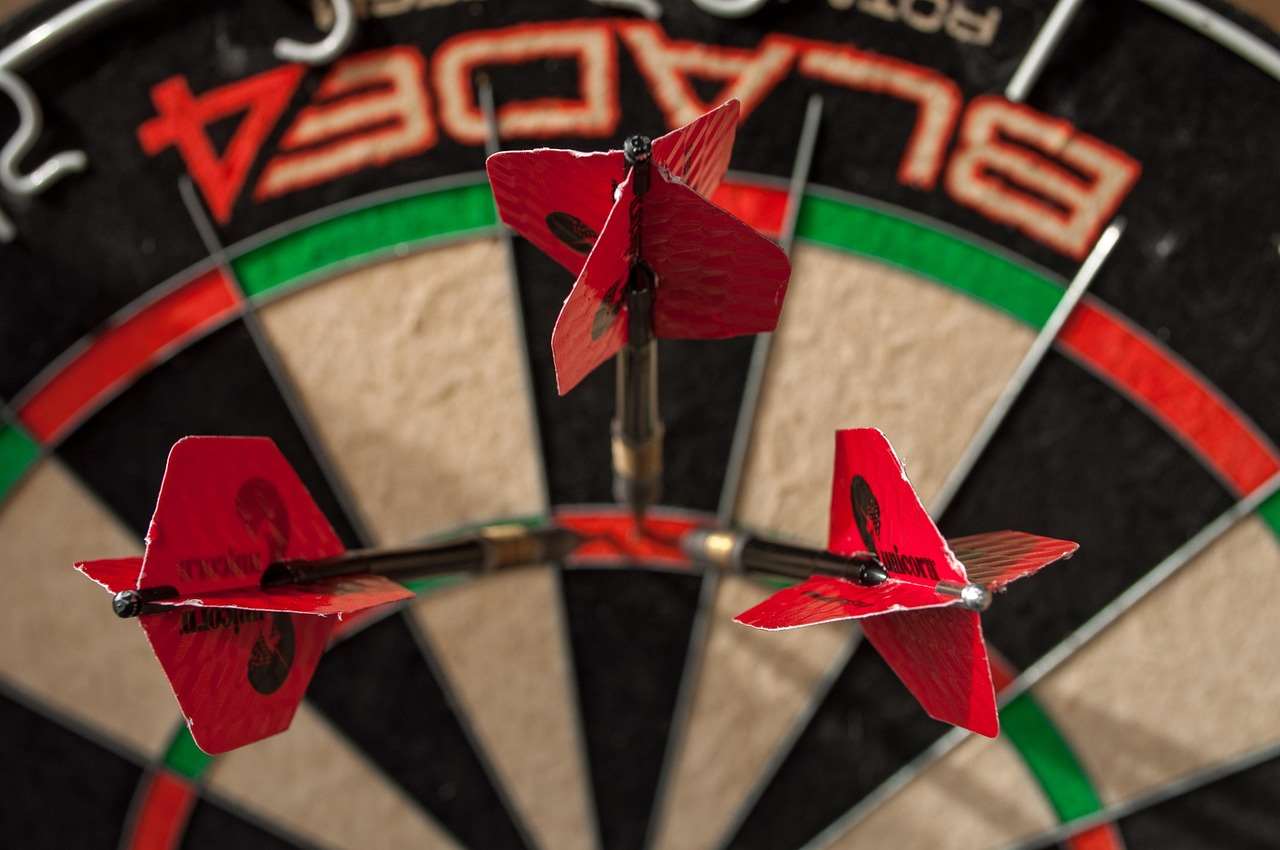
Lack of Follow-Through
A weak or incomplete follow-through can significantly affect your aim in darts. Ensure that you extend your arm fully towards the target after releasing the dart. Avoid stopping your arm short or pulling it back too quickly. A proper follow-through ensures that the dart is released smoothly and accurately. Many players find watching videos of professional players useful for improving their follow through. Many professionals have a very pronounced and exaggerated follow through.
Mental Blocks and Pressure
Mental blocks and pressure can significantly impact your aim in darts. Learn to manage your emotions and stay focused on the task at hand. Practice relaxation techniques to calm your nerves and improve your concentration. Visualize success and believe in your abilities. Remember that everyone misses, even the pros! Focus on the next throw, not the previous one.
Advanced Techniques for Aim in Darts
For players looking to take their game to the next level, mastering advanced aiming techniques can provide a competitive edge. These techniques require a deeper understanding of dart trajectory and board dynamics.
Using the Board Geometry
Understanding the geometry of the dartboard can significantly improve your aim in darts. The board is divided into segments, each with a specific angle and distance from the bullseye. By learning these measurements, you can make precise adjustments to your aim and target specific areas of the board. For example, hitting a single 20 instead of a treble 20 only requires a very small adjustment to your point of aim.
Deflection and Spin Control
Experienced players often use deflection and spin control to manipulate the trajectory of the dart. By adjusting your grip and release, you can impart a slight spin to the dart, causing it to curve in flight. This technique can be useful for avoiding obstacles or hitting targets that are partially blocked. This is an advanced technique, but if you are consistently hitting the same number you may wish to experiment with this technique to improve your scoring potential.
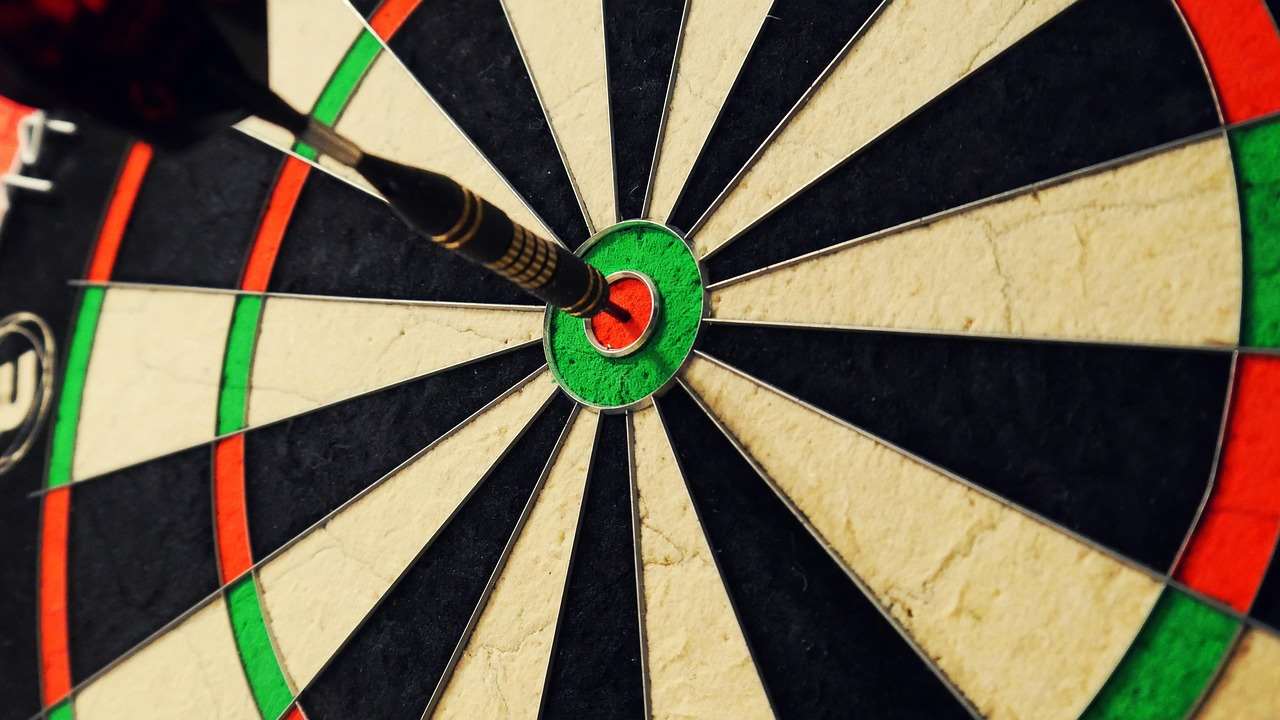
Mental Game: Visualization and Focus
The mental aspect of aim in darts is just as important as the physical technique. Visualization and focus are key tools for improving your consistency and accuracy. Before each throw, visualize the dart hitting your target. Focus on your breathing and clear your mind of any distractions. Develop a pre-throw routine that helps you to center yourself and prepare for the shot. There are apps available that will allow you to track all your throws and see trends in your gameplay, such as the App to score darts.
Equipment and Setup for Optimal Aim in Darts
Having the right equipment and setup can significantly impact your aim in darts. Investing in quality darts and setting up your dartboard correctly can improve your accuracy and consistency.
Choosing the Right Darts
The right darts can make a big difference in your performance. Consider factors such as weight, material, and grip when choosing darts. Experiment with different types of darts to find what feels most comfortable and suits your throwing style. Many players prefer heavier darts for increased stability, while others prefer lighter darts for greater control. The balance point of the dart also affects its flight characteristics. You might even wish to explore rude dart flights to have a laugh with your friends.
Dartboard Setup and Lighting
Proper dartboard setup is essential for accurate throwing. Ensure that the dartboard is hung at the correct height (5 feet 8 inches to the bullseye) and distance (7 feet 9 1/4 inches from the oche to the face of the board). Proper lighting is also crucial. Position a light above the dartboard to eliminate shadows and improve visibility. A well-lit dartboard makes it easier to focus on your target and improve your aim.
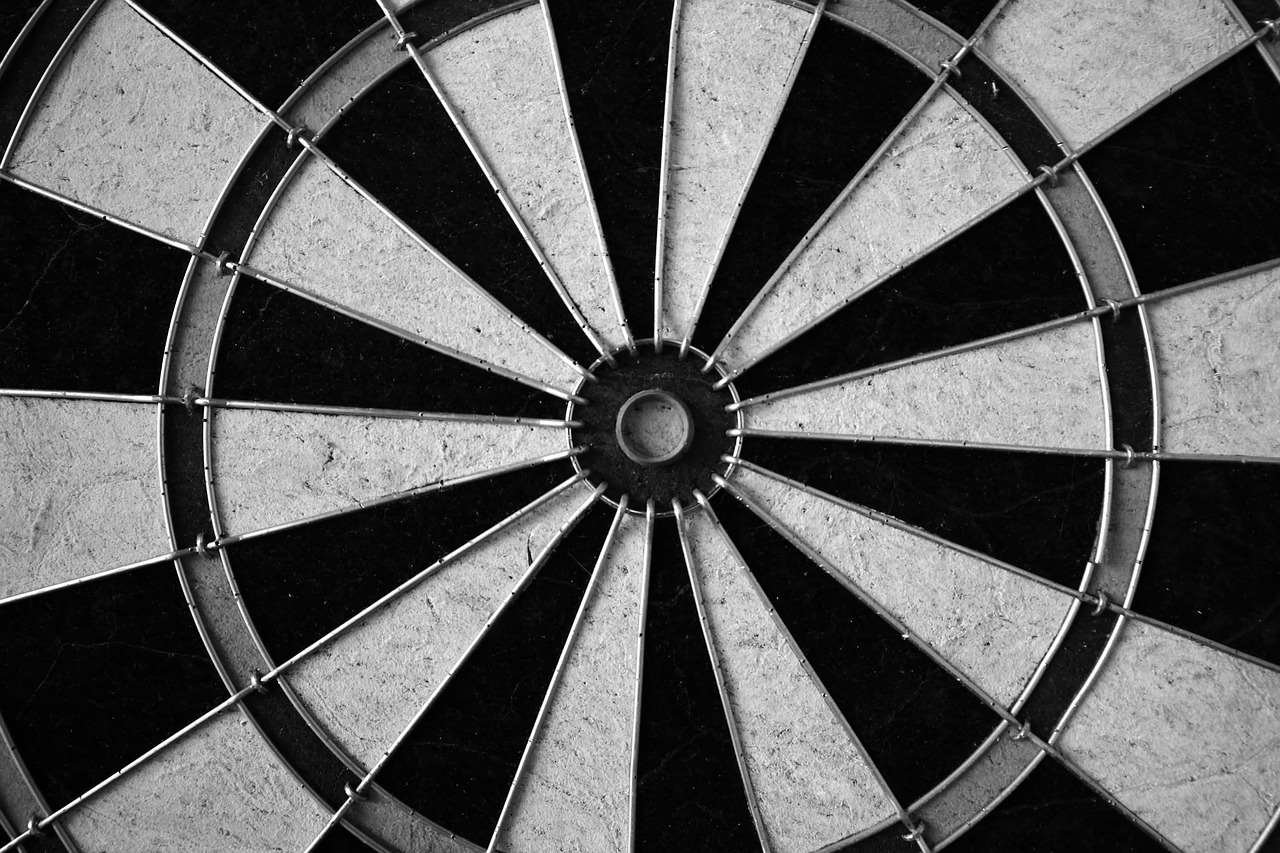
Conclusion
Mastering aim in darts is a journey that requires dedication, practice, and a deep understanding of the fundamentals. By focusing on stance, grip, alignment, and release, you can build a strong foundation for consistent and accurate throwing. Remember to refine your technique through targeted drills and avoid common mistakes that can affect your aim. Embrace advanced techniques such as board geometry and spin control to take your game to the next level. Ultimately, improving your aim in darts requires a combination of physical skill, mental focus, and the right equipment. Now, pick up your darts, apply these tips, and watch your scores soar!
Hi, I’m Dieter, and I created Dartcounter (Dartcounterapp.com). My motivation wasn’t being a darts expert – quite the opposite! When I first started playing, I loved the game but found keeping accurate scores and tracking stats difficult and distracting.
I figured I couldn’t be the only one struggling with this. So, I decided to build a solution: an easy-to-use application that everyone, no matter their experience level, could use to manage scoring effortlessly.
My goal for Dartcounter was simple: let the app handle the numbers – the scoring, the averages, the stats, even checkout suggestions – so players could focus purely on their throw and enjoying the game. It began as a way to solve my own beginner’s problem, and I’m thrilled it has grown into a helpful tool for the wider darts community.